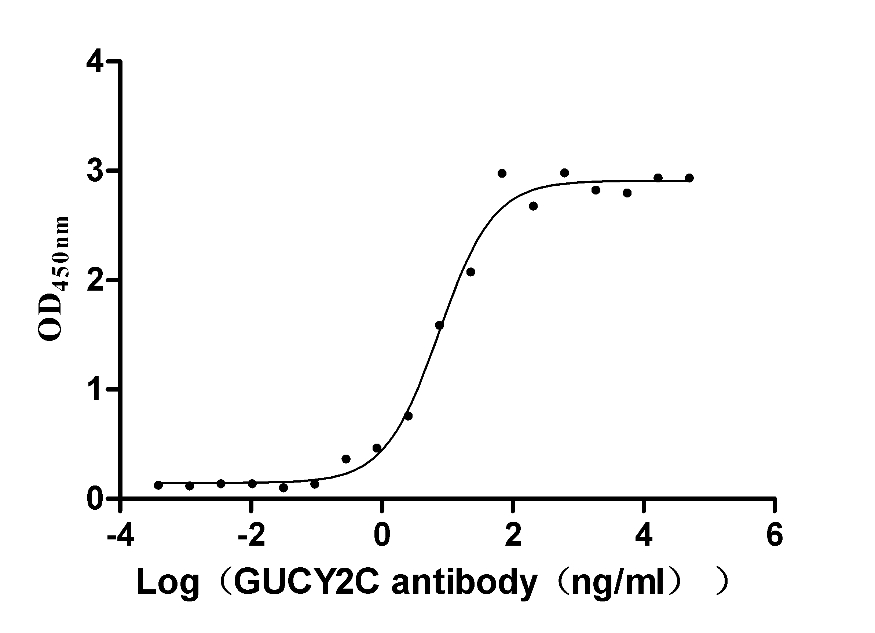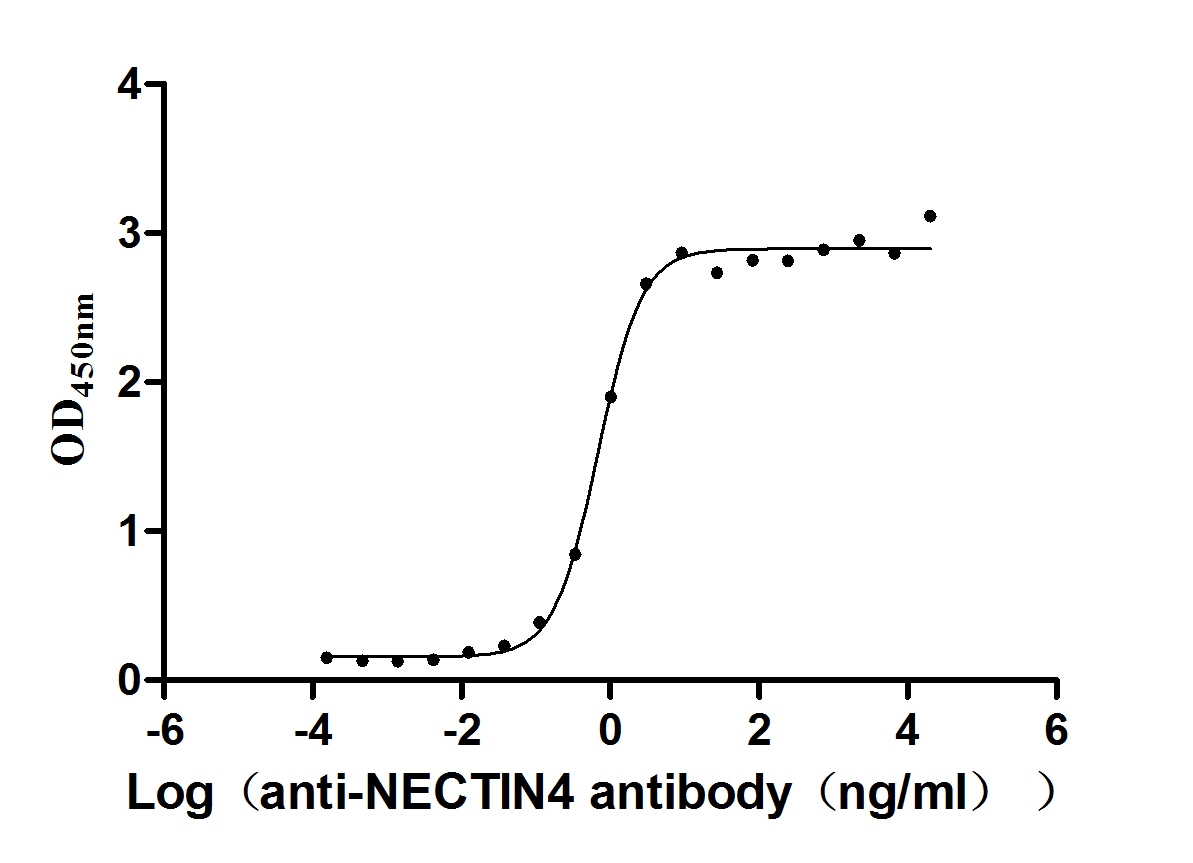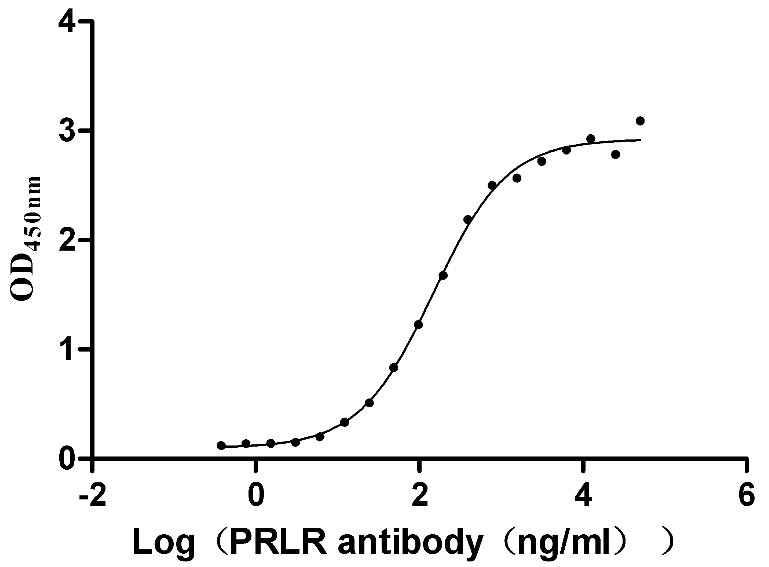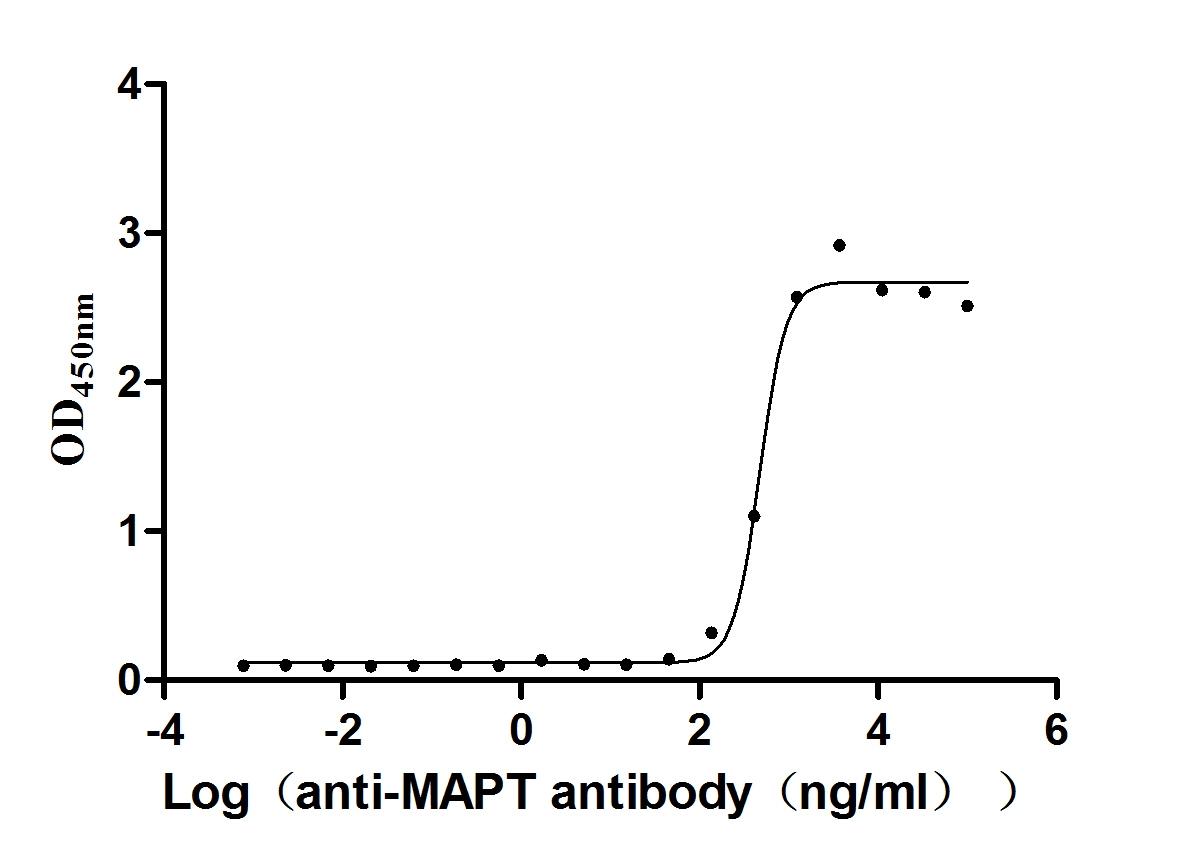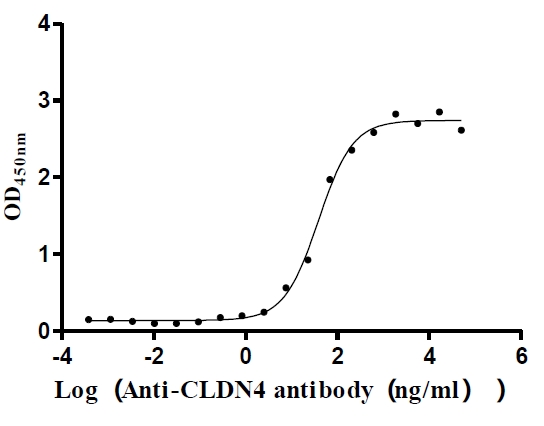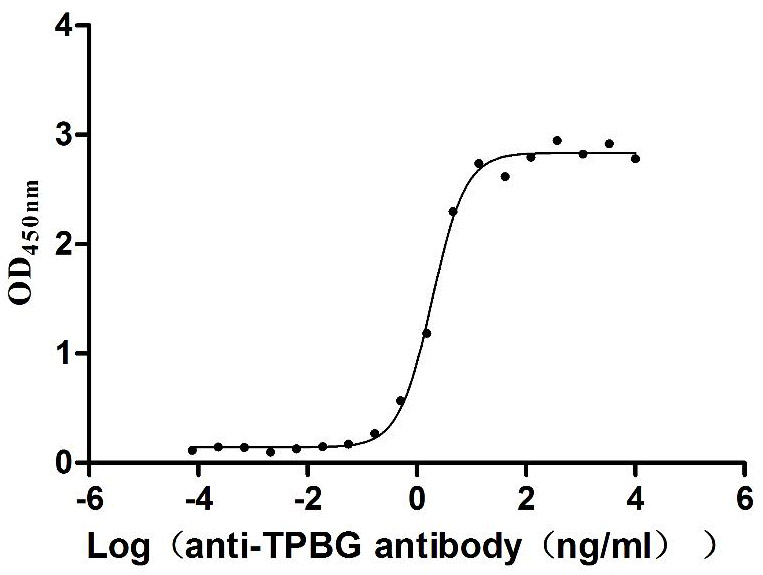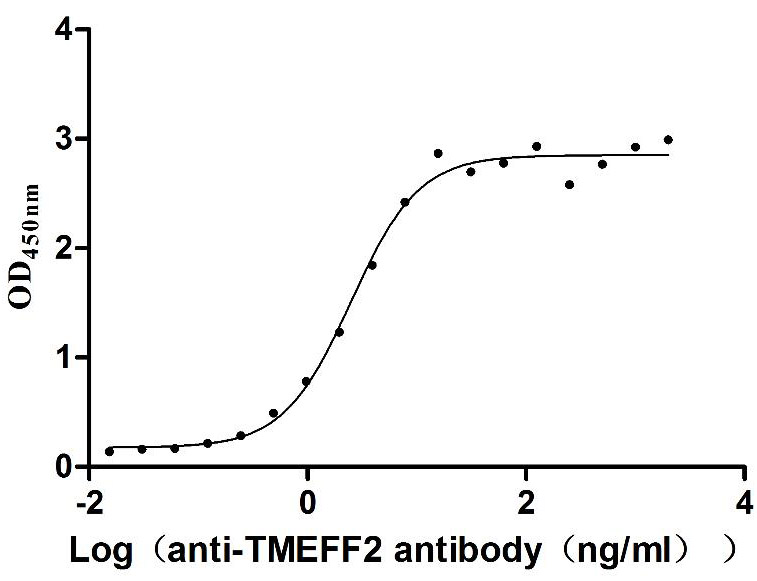Recombinant Mouse Polyphosphoinositide phosphatase (Fig4), partial
-
中文名稱:小鼠Fig4重組蛋白
-
貨號:CSB-YP856303MO
-
規(guī)格:
-
來源:Yeast
-
其他:
-
中文名稱:小鼠Fig4重組蛋白
-
貨號:CSB-EP856303MO
-
規(guī)格:
-
來源:E.coli
-
其他:
-
中文名稱:小鼠Fig4重組蛋白
-
貨號:CSB-EP856303MO-B
-
規(guī)格:
-
來源:E.coli
-
共軛:Avi-tag Biotinylated
E. coli biotin ligase (BirA) is highly specific in covalently attaching biotin to the 15 amino acid AviTag peptide. This recombinant protein was biotinylated in vivo by AviTag-BirA technology, which method is BriA catalyzes amide linkage between the biotin and the specific lysine of the AviTag.
-
其他:
-
中文名稱:小鼠Fig4重組蛋白
-
貨號:CSB-BP856303MO
-
規(guī)格:
-
來源:Baculovirus
-
其他:
-
中文名稱:小鼠Fig4重組蛋白
-
貨號:CSB-MP856303MO
-
規(guī)格:
-
來源:Mammalian cell
-
其他:
產(chǎn)品詳情
-
純度:>85% (SDS-PAGE)
-
基因名:Fig4
-
Uniprot No.:
-
別名:Fig4; Kiaa0274; Sac3Polyphosphoinositide phosphatase; EC 3.1.3.-; Phosphatidylinositol 3,5-bisphosphate 5-phosphatase; SAC domain-containing protein 3
-
種屬:Mus musculus (Mouse)
-
蛋白長度:Partial
-
蛋白標(biāo)簽:Tag?type?will?be?determined?during?the?manufacturing?process.
The tag type will be determined during production process. If you have specified tag type, please tell us and we will develop the specified tag preferentially. -
產(chǎn)品提供形式:Lyophilized powder
Note: We will preferentially ship the format that we have in stock, however, if you have any special requirement for the format, please remark your requirement when placing the order, we will prepare according to your demand. -
復(fù)溶:We recommend that this vial be briefly centrifuged prior to opening to bring the contents to the bottom. Please reconstitute protein in deionized sterile water to a concentration of 0.1-1.0 mg/mL.We recommend to add 5-50% of glycerol (final concentration) and aliquot for long-term storage at -20℃/-80℃. Our default final concentration of glycerol is 50%. Customers could use it as reference.
-
儲存條件:Store at -20°C/-80°C upon receipt, aliquoting is necessary for mutiple use. Avoid repeated freeze-thaw cycles.
-
保質(zhì)期:The shelf life is related to many factors, storage state, buffer ingredients, storage temperature and the stability of the protein itself.
Generally, the shelf life of liquid form is 6 months at -20°C/-80°C. The shelf life of lyophilized form is 12 months at -20°C/-80°C. -
貨期:Delivery time may differ from different purchasing way or location, please kindly consult your local distributors for specific delivery time.Note: All of our proteins are default shipped with normal blue ice packs, if you request to ship with dry ice, please communicate with us in advance and extra fees will be charged.
-
注意事項:Repeated freezing and thawing is not recommended. Store working aliquots at 4°C for up to one week.
-
Datasheet :Please contact us to get it.
靶點詳情
-
功能:The PI(3,5)P2 regulatory complex regulates both the synthesis and turnover of phosphatidylinositol 3,5-bisphosphate (PtdIns(3,5)P2). In vitro, hydrolyzes all three D5-phosphorylated polyphosphoinositide substrates in the order PtdIns(4,5)P2 > PtdIns(3,5)P2 > PtdIns(3,4,5)P3. Plays a role in the biogenesis of endosome carrier vesicles (ECV) / multivesicular bodies (MVB) transport intermediates from early endosomes.; Dual specificity phosphatase component of the PI(3,5)P2 regulatory complex which regulates both the synthesis and turnover of phosphatidylinositol 3,5-bisphosphate (PtdIns(3,5)P2). Catalyzes the dephosphorylation of phosphatidylinositol 3,5-bisphosphate (PtdIns(3,5)P2) to form phosphatidylinositol 3-phosphate. Has serine-protein phosphatase activity acting on PIKfyve to stimulate its lipid kinase activity, its catalytically activity being required for maximal PI(3,5)P2 production. In vitro, hydrolyzes all three D5-phosphorylated polyphosphoinositide and although displaying preferences for PtdIns(3,5)P2, it is capable of hydrolyzing PtdIns(3,4,5)P3 and PtdIns(4,5)P2, at least in vitro.
-
基因功能參考文獻(xiàn):
- Neuronal expression of Fig4(C486S) transgene prevents neonatal neurodegeneration & juvenile lethality seen in Fig4-/- mice. However, later in life Fig4(C486S) causes significant abnormalities: hydrocephalus, defective myelination &reduced lifespan PMID: 26604144
- Inactivation of Fig4 in motor neurons display neuronal and axonal degeneration. PMID: 25187576
- Fig4 expression in the neurons is both necessary and sufficient to prevent spongiform neurodegeneration PMID: 22581779
- Haploinsufficiency of Fig4 does not impose risks in rodents to develop neuronal degeneration in either naive or traumatic conditions. PMID: 21872275
- Fig4 may be required to prevent neurons and glia from excessive lysosomal accumulation after injury and in neurodegeneration. PMID: 22157617
- Pathogenic mechanism of the FIG4 mutation responsible for Charcot-Marie-Tooth disease CMT4J PMID: 21655088
- Results suggest that Fig4 deficiency affects motor neurons differently from sensory neurons by mechanisms involving excessive retention of molecules in lysosomes or disruption of vacuolated organelles. PMID: 21410794
- a novel regulatory mechanism whereby ArPIKfyve enhances Sac3 abundance by attenuating Sac3 proteasome-dependent degradation and suggest that a failure of this mechanism could be the primary molecular defect in the pathogenesis of CMT4J. PMID: 20630877
- shd1 is involved in cell cycle progression, in particular centrosome duplication and a spindle assembly checkpoint function. PMID: 15322101
- The pale tremor mutant provides the first evidence regarding the functional role of mammalian Fig4 PMID: 17572665
- Sac3 as an insulin-sensitive phosphatase whose down-regulation increases insulin responsiveness, thus implicating Sac3 as a novel drug target in insulin resistance. PMID: 19578118
顯示更多
收起更多
-
相關(guān)疾病:Defects in Fig4 are the cause of the pale tremor phenotype which is a multi-organ disorder with neuronal degeneration in the central nervous system, peripheral neuronopathy and diluted pigmentation. At postnatal day three (P3), affected homozygotes have diluted pigmentation and reduced size. Intentional tremor develops during the second week after birth, and abnormal limb postures are evident by the third week. There is impaired motor coordination, muscle weakness and "swimming" gait. There is progressive loss of mobility, reduction in body weight and juvenile lethality.
-
亞細(xì)胞定位:Endosome membrane.
-
組織特異性:Wide-spread.
-
數(shù)據(jù)庫鏈接:
Most popular with customers
-
Recombinant Human T-cell antigen CD7 (CD7), partial (Active)
Express system: Mammalian cell
Species: Homo sapiens (Human)
-
Recombinant Human Heat-stable enterotoxin receptor (GUCY2C), partial (Active)
Express system: Mammalian cell
Species: Homo sapiens (Human)
-
Recombinant Human Nectin-4 (NECTIN4), partial (Active)
Express system: Mammalian cell
Species: Homo sapiens (Human)
-
Recombinant Human Prolactin receptor (PRLR), partial (Active)
Express system: Mammalian cell
Species: Homo sapiens (Human)
-
Recombinant Mouse Microtubule-associated protein tau (Mapt) (Active)
Express system: Mammalian cell
Species: Mus musculus (Mouse)
-
Recombinant Human Claudin-4 (CLDN4)-VLPs (Active)
Express system: Mammalian cell
Species: Homo sapiens (Human)
-
Recombinant Macaca fascicularis Trophoblast glycoprotein (TPBG), partial (Active)
Express system: Mammalian cell
Species: Macaca fascicularis (Crab-eating macaque) (Cynomolgus monkey)
-
Recombinant Human Tomoregulin-2 (TMEFF2), partial (Active)
Express system: Mammalian cell
Species: Homo sapiens (Human)



